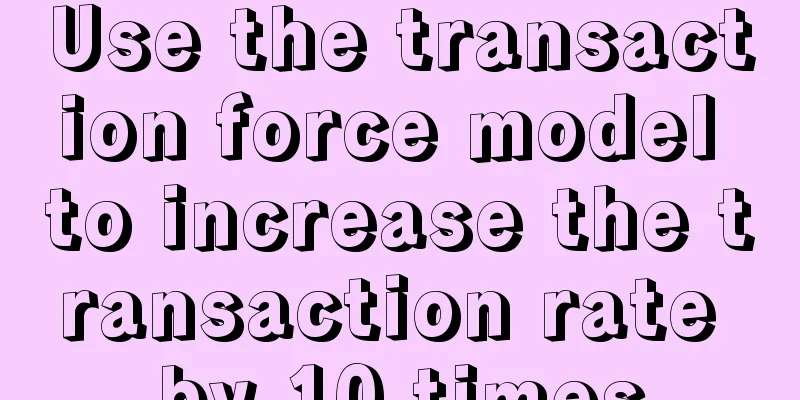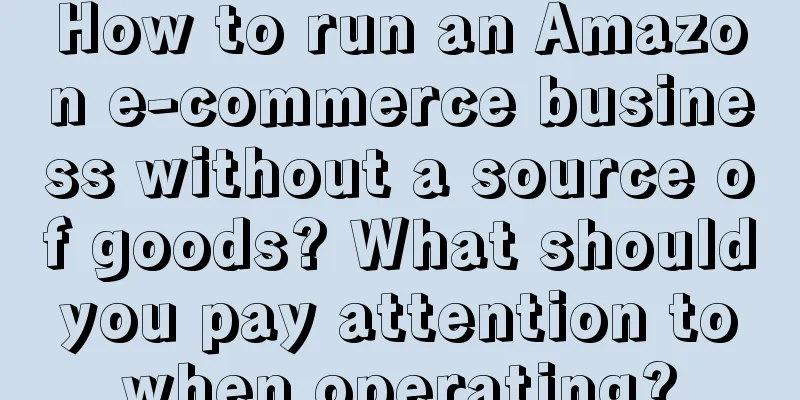Use the transaction force model to increase the transaction rate by 10 times

Recently, I am learning top sales skills and IP knowledge, and I have a better understanding of sales. Below, I combine theoretical knowledge and practical experience to summarize the five-dimensional sales force model commonly used in sales, hoping to help you detonate a 10-fold sales rate! 01 Sales Force Model1. Establish relationships: When you first meet a user, you need to build a good impression and get closer to the user; 2. Pain point attack: reveal user pain points, build good expectations, and let users identify the pain points; 3. Value shaping: Demonstrate product value, magnify product value, and make users feel that it is worth it; 4. Build trust: Let users trust you, trust the brand, and trust the product; 5. Price dimension: The final bottleneck that puts pressure on users to speed up the order. Below, we will explain in detail how to do the five dimensions according to the pre-sales, mid-sales and post-sales processes. 02 Early stage of sales - building relationships1. The purpose of the initial salesEstablish an initial relationship with the customer, make a good impression on the customer, and arouse the user's interest. Because in the early stage, the customer does not know you yet, so don't start selling right away, which is easy to cause disgust. The correct approach is to close the distance first and let him trust you step by step. 2. How to win the favor of users1) Use titles: Use titles used in informal situations, such as handsome guy, young lady, teacher, etc. 2) Self-introduction: introduce your name and label. If you have enough time, you can also continue to introduce your achievements and events to make others think you are awesome; 3) Create atmosphere: Describe your feelings about the atmosphere, let the other party share the same feelings, and get closer to strangers. For example, what is the weather like today, what is the environment like here, etc. 4) Start a topic: Start with a common experience or something the customer is interested in. For example, your hometown, school, or the things he uses, his hobbies, his habits, etc. 5) Asking users for advice: During the communication process, sometimes you can chat in the form of "asking for advice". People like to be teachers. If you reveal that you don't understand certain topics, you will take the initiative to be a younger brother, and others will be tempted to guide you. If the above skills are for offline sales, they are more focused on building goodwill with users in a short period of time, so they tend to open up topics (because it is more difficult offline and users may leave at any time); if it is online sales, such as private domain marketing, they are more focused on introducing themselves and allowing users to establish initial trust. After getting to know the user initially, the next step is to enter the mid-sales phase - building trust. 03 Mid-sales period - Building trust1. The purpose of mid-term salesBuild trust with users. Understand user needs and use product value to break through bottlenecks; cite customer cases to increase trust. 2. How to build trust?1) Pain point attack : When marketing, instead of telling users how good your product is, you should first do cognitive tuning with users. Let users realize that they have needs and they must be satisfied immediately. Explain that after the needs are met, the results will be great, thus attracting users to listen further. How to do it specifically? Step 1: Discover the customer’s pain points; Step 2: Explain the reasons for the formation of pain points and why I know these pain points and the reasons for their formation; Step 3: Explain the consequences of the pain points and why I care about the consequences of these pain points; Step 4: Explain how I solved the problem before and how I can help you now, and build good expectations after the pain point is solved. 2) Value creation : After addressing the pain points, we need to use product value to solve the user's pain points and appropriately amplify the value. Step 1: Product introduction, using product value to solve user pain points; Step 2: Focus on the results. The more specific the better (you can use usage scenarios; it is best to use more numbers); Step 3: Explain why you chose this product (you can compare the highlights of competing products and display user cases with results); Step 4: Value addition. In addition to the product, there are other accompanying values, such as after-sales, one-on-one answer and other services. 3) Building trust : After value creation, build trust. The decision cycle of high-order products is long, and trust accumulation requires a long time; the decision cycle of low-order products is short, and a deal may be completed after one communication and one sale. The following is an explanation of these two products:
Some users are impressed in the middle stage of sales and place orders immediately; but some users are more sensitive to prices and will hesitate for a while, which is when the product enters the late stage of sales. 04 Late sales phase – speed up order placement1. Purpose of post-salesBreak the price bottleneck and speed up order placement. After the mid-term of sales, users have the urge to place an order. But they are still hesitant. The main reason is that the price is too high and they want to lower the price. (Or they may have concerns about their own time, after-sales service, etc., here we only talk about the main reasons) 2. How to break the price bottleneck and speed up order placementStep 1: Understand what users consider to be “high prices”; Step 2: Acknowledge that the other party’s point of view is reasonable under limited conditions (such as comparison with competing products); Step 3: Present different views and opinions in a step-by-step and emotional way, explaining that high value deserves a high price (magnify product value and strengthen product features); Step 4: Give away super gifts and coupons, or inform the other party that there is a step-by-step price increase mechanism, so the earlier you buy, the earlier you earn. In short, it is to put pressure on users to "loss aversion" and speed up their orders. Author: Hu Meng, Official Account: Xiaohuxue Products |
<<: Xiaohongshu's monetization model and 6 types of notes
>>: Young people's "New Year" behavior awards
Recommend
"News Queen" is a big hit, but TVB's live streaming is still "a little short" of success
As a popular business model, live streaming is att...
Where can I find the Amazon ASIN code? What is the ASIN code?
It is not an easy task for an e-commerce platform ...
Duan Yongping and Jiang Xiaobai: Who understands marketing better?
There are a lot of invisible marketing now, and ma...
How does Shopee open a Polish site? How to operate a site?
Now more and more merchants are opening stores on ...
Sora is here, but don't worry!
After the Sora model was released, it had a huge i...
A Guide to Hard-core Influencer Branding
The ultimate goal of establishing a brand is to ha...
The traffic code and marketing inspiration behind the explosion of Zhang Yuqi's "Tuchao" short video
Short videos have become an important channel for ...
With 500,000 fans selling 30 million worth of goods, is Bilibili doing well again?
This article describes in detail the case of @Coco...
Does Wish require a deposit to open a store? How can I get a refund?
Wish is a very popular platform in the US market. ...
Does Amazon customer service call customers? Is there online customer service?
Amazon not only has a large market share, but also...
Insight into the Beijing Auto Show: Attribution of Automotive Companies’ Marketing Effectiveness
This article discusses the social media marketing ...
AI influencer, working 24 hours a day, earning 70 million yuan a year
As AI technology develops rapidly, AI influencers ...
Can I make money by opening a store on Shopee? Are there great opportunities to make money?
Now more and more merchants are opening stores on ...
Can you see the effect of Amazon Post? What is its use?
Today I will introduce to you the content of openi...
What should a novice do in eBay operation? What are the skills?
Although there are many people doing e-commerce in...









